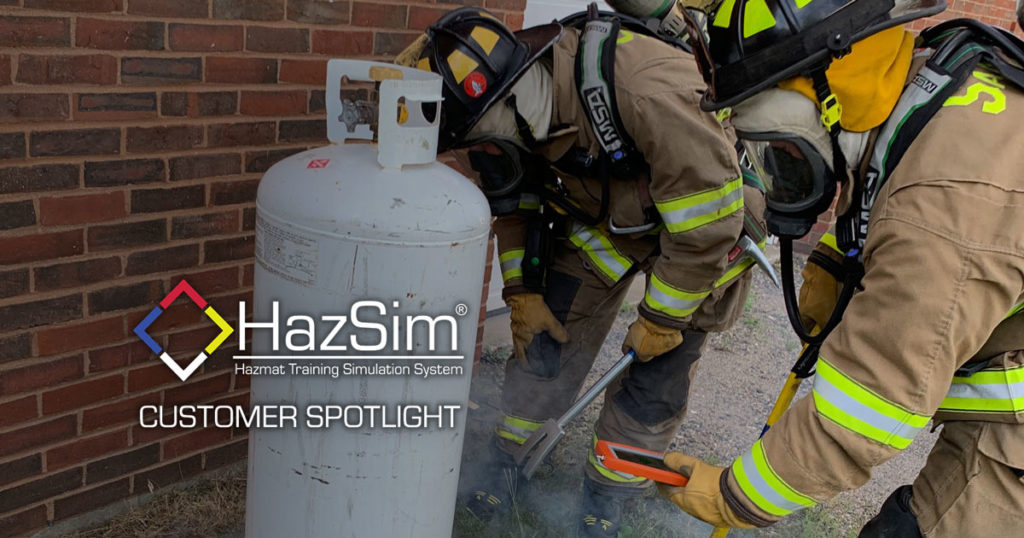Focusing on scenarios they will likely see is one way Luciano reaches his wide range of hazmat students
When looking at hazmat training, it’s easy to focus only on the public-sector entities and miss out on the really cool things going on in the private sector. We sat down with Specialty Response Solutions President Scott Luciano to learn how he goes about training a wide range of clients.
How did you get your start in hazmat?
I started off as a volunteer firefighter and, because there were two paper mills in town, I attended a large hazmat exercise before I had even completed much firefighter training. This started to pique my interest. When I attended college, I stopped in to check out a hazmat drill that the fire department was conducting. I applied for a position soon after and that began my career in hazmat.
I was lucky to have some great role models who pushed me. My captain at the time, Lorin LeCleire, had a great awareness about hazmat and an interest in sharing that knowledge. I was also working as a fire instructor and teaching at the community college. The hazmat program director was a retired firefighter named Tim Carr. Somehow Tim took a chance on me and sent me to three train-the-trainer programs for emergency response to terrorism at the National Fire Academy.
There were two representatives from each state and most of them were the heavy hitters when it came to hazmat response. I was in way over my head, but it pushed me. This was a few years before 9/11, so there wasn’t a large interest in these programs until the terrorist attacks except for a small Army group called a RAID team (now known as the 11th WMD-CST). I taught a class for them when they were in their infancy and, after 9/11, continued to train with them and built some great relationships.
For over 25 years, I responded as a member of the regional hazmat team to incidents at a university, research facilities, government buildings and transportation incidents. At some point, I realized that I needed to learn a different way. In order to do that I created a company that provided real-world training. In 2013 I started Specialty Response Solutions and began delivering training classes. Since 2019, I have been delivering training full time.
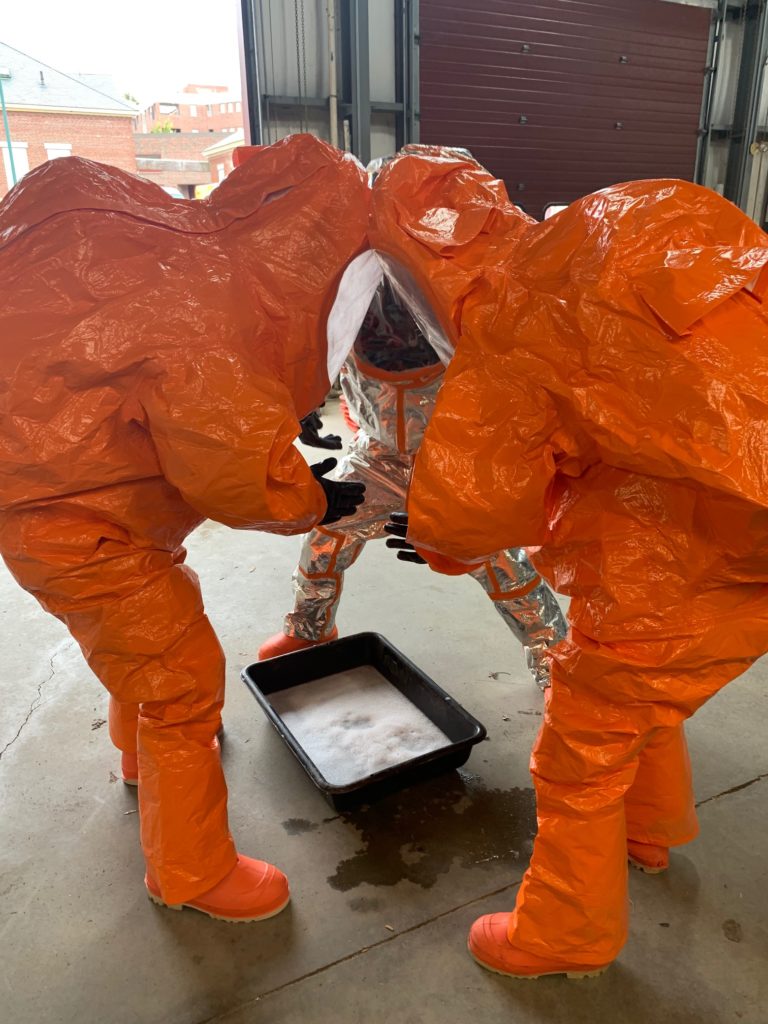
What type of students you train?
Most of our training sites are at the fire station or industrial facility that is hosting the class. We have also had some real success with local businesses letting us train at their facilities. We bring in the training props and install them among the normal machinery and equipment on site. Especially for our confined space classes, this has proven to be an excellent partnership. The fire department gets to train in the actual site where an emergency might happen and the facility can evaluate the capabilities of the response team.
How do you mix up the training scenarios so they don’t become predictable or stale?
Our students have a really wide demographic range. For hazmat classes, our students can be part of the state Department of Environmental Protection hazmat team, career or volunteer firefighters, work in a paper mill, or they may work in a world-renowned biogenetics lab. They all have different experience and knowledge bases. Because of this, we develop training programs for each individual course. We also try to maintain a balance of classroom and hands-on training.
We definitely have some great instructors on staff who are blessed with a creative imagination and a real dedication to the job. They are also responders with real-world experiences, so I will get calls or texts with information about a call they just completed. We try to incorporate these scenarios into the class.
The world has also changed since I got into hazmat. Before, the only way that you would find out about a hazmat call is if it were local or it came out in a monthly fire magazine or video. Those were usually only the big calls. Social media has changed that. Just the right hashtag will tell millions about what you are responding to or training on. We incorporate those experiences into scenarios in our classes.
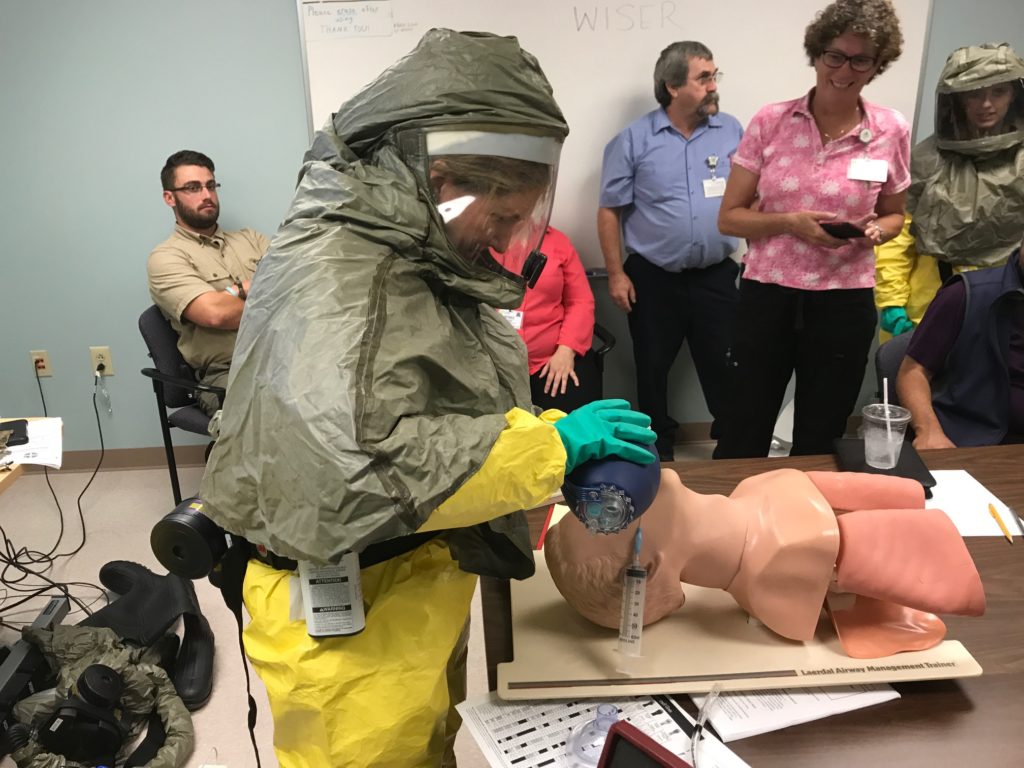
What’s the key to best preparing responders to handle real scenarios outside of the controlled training environment?
First, they have to be able to think through the scenarios. If our classes were all based on memorizing data, the students would be educated but soon lose that information. I have never heard a responder talk about the Love Canal superfund site at an emergency. But I often hear “this is just like that call in 2008” or “that scenario we did in class.” So, we try to work through scenarios with the tools and PPE that they have available to them.
Although some of our students do hazmat or confined space every day, many of them are firefighters, wastewater workers or national park rangers. Because of this, we also try to give them skills that they can apply on the job regularly. Gas meters are a great example.
Getting firefighters to take their meter with them when they are doing a building inspection will give them a baseline of what to expect in that facility. We have done suspicious powder calls at one of the local federal buildings and found a spike in radiation readings once we entered the building. After a few minutes, we realized that it was related to the granite used to build the facility. That is a great way to know what to expect, but you can’t always count on the meter giving those unusual readings. That is when we use the HazSim to show them and then explain why they may get those readings.
What is your biggest obstacle when conducting hazmat training?
Getting students interested and participating in the class can sometimes be a challenge. Hazmat is a dirty word to some students, and I understand it. So many of the classes that I used to take were PowerPoint based and the same class year after year. They watch a video about a railcar BLEVE that happened 20 years ago and know that they will probably never see that in their career.
Instead, we show them a 100-pound propane cylinder venting at a structure fire because most have seen that. Then we build scenarios where they can actually practice skills. That is why I started Specialty Response Solutions, to provide training that was realistic and applicable.
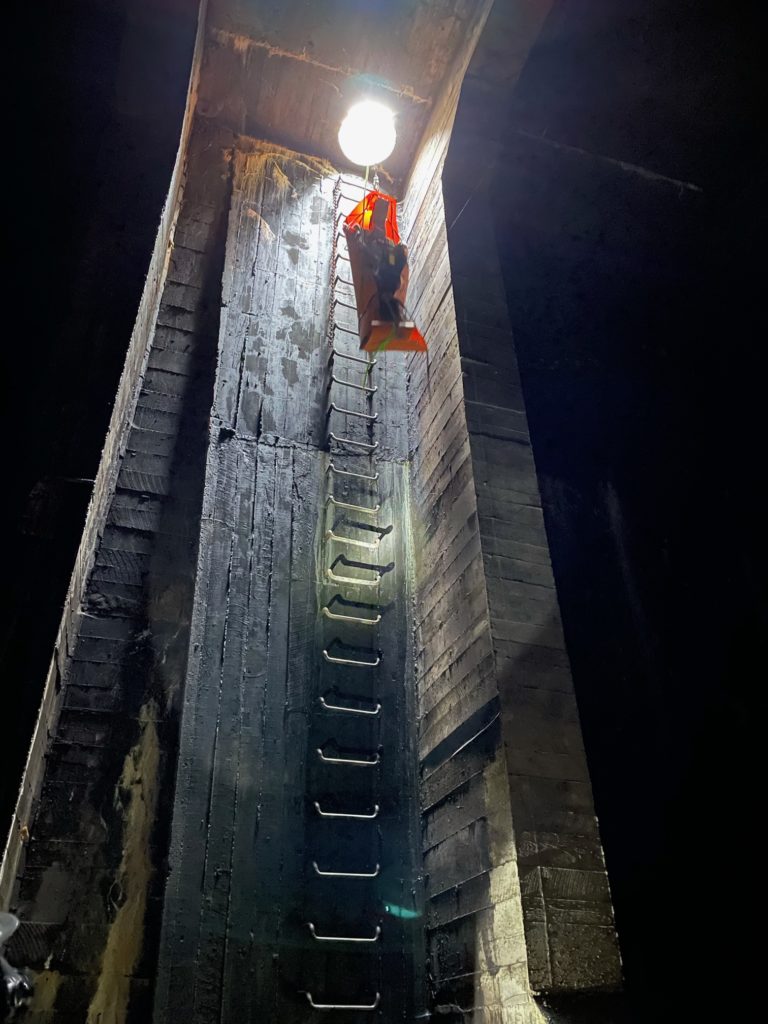
What wicked training problem keeps you up at night?
Complacency. I have definitely been there and others may have too. We lost a firefighter in Maine to a propane explosion recently and I sit back and think about how many propane odor calls that I responded to and didn’t take all the right steps. It would keep me up when I was on the job too, worrying about what could be done differently to keep the whole crew safe and do our job better.
When class is done, we debrief about what worked and what didn’t. Overall, I hope that each person leaves with an interest in what we talked about and a few key principles that they will remember. Nobody can pass on 25 years of experiences in 8 hours. However, if they leave with an interest, they might keep reading or training on the subject and, it is that perpetual learning that keeps people ready to respond.
What would it take to solve it?
Persistence is really the key. I spend countless hours reviewing, and probably overthinking, the classroom experience. Ultimately, I want to plant a seed that keeps them thinking and learning. Secondly, I want every student to feel confident in their skills and know when to reach out for help. The hazmat community is pretty small, and it doesn’t matter if you are from FDNY or a small town in Maine, someone will know the answer and be willing to help.
What devices do you rely on most for realistic training?
We are using the HazSim in almost every course. From hazmat to confined space, it really allows the students to build good habits and understand the numbers. We start in the classroom having students walk around and take readings. They get in the habit of bending down to get readings at the floor since almost all gases are more dense than air. It also allows them to tell the rest of the class what they have for levels so that class can determine PPE or actions. This keeps everyone involved.
We also use many more traditional tools to add realism. Smoke machines and noises add to the effect. Actors that can make the scenario more realistic or stressful are great when the students feel more confident.
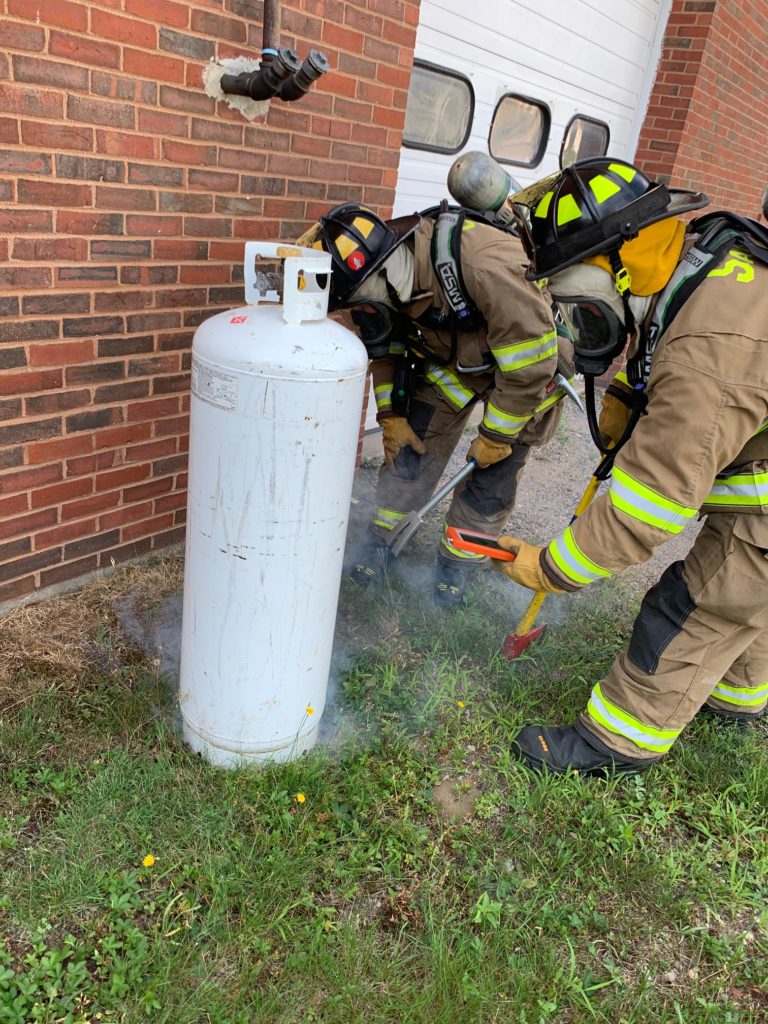
Do you alter training for new responders versus seasoned veterans?
I follow the wedding philosophy when we develop our refresher courses: Something old, something new, something borrowed, something blue. We borrow scenarios from real-world incidents and try to replicate them. Sometimes those scenarios happened locally and the seasoned responders know many of the details. Many times the students can learn more from each other and we can just act as a facilitators.
New skills, technologies or target hazards are added in to every class. We just completed a class that used a rescue basket and ropes system to move victims at a mass-casualty hazmat call. This department will probably never have a mass-casualty hazmat call, but they may use the skill when rescuing several victims during an ice rescue. Not only did we introduce a new skill, but we gave them a reason to keep practicing the skill.
Then there has to be something old — a perishable skill that we want to refresh on or a topic we covered and want to expand on. We get a lot of comments from seasoned responders who say “I forgot about that” or “I never really understood that before.”
Finally, something blue. One thing that we see is firefighters and hazmat responders committing to hazmat training. We try to talk about building relationships and working with other organizations that may wear a different blue uniform. How are we going to communicate, interact and respond to hazmat incidents with EMS, industry, emergency management, law enforcement, or military teams? What other resources do they bring to the table?
How do you keep the classroom portion of hazmat training fresh?
Research. Once, there was a magazine that would come out and you might see the big hazmat job of the month. The reality is, there are hundreds of hazmat calls going on right now. Social media has allowed us to see so many training scenarios daily. Obviously, a picture or video doesn’t tell the whole story but, firefighters take care of each other. If you reach out, more than likely they will tell you the whole story and what went well … or didn’t.
What’s the optimum class size and why?
I have always enjoyed company drills. Four or five people provides an easily manageable class where you can see their strengths and challenges. It also is small enough that students feel comfortable asking questions and have to participate.
As a hazmat instructor, what’s been your biggest “ah-ha” teaching moment—the one that perhaps changed how you teach?
I’m not even sure that it is a teaching moment or it changed how I teach, but sometimes you end the day wondering what you accomplished. Did you make a difference in the world? Is it worth the time commitment? A student from years ago sent me a message when I was having one of those days. It was a picture of his captain’s badge that he just received in Virginia Beach. He thanked me for taking the time to teach him. It is moments like that, that reignite that passion to teach and push you to the next level.
What role does technology play in how you teach hazmat?
Certainly, Covid-19 has changed the way that we operate forever. I expect many companies to change the way that they do business and we have had to use to technology to remain afloat. I think computer-based training and self-paced learning will be used more to complete some of the lecture and classroom time.
While technology helps in many ways, it all comes down to skills training because that is what responders do, perform skills. It is also the way that we remember things. Ultimately, we have to balance technology and traditional learning. If we can use technology to build a realistic training environment, then students will learn and enjoy the experience. If it is on a screen and they are trying to put out a fire, it is a training tool but is nothing like the real stress of having smoke and fire.


